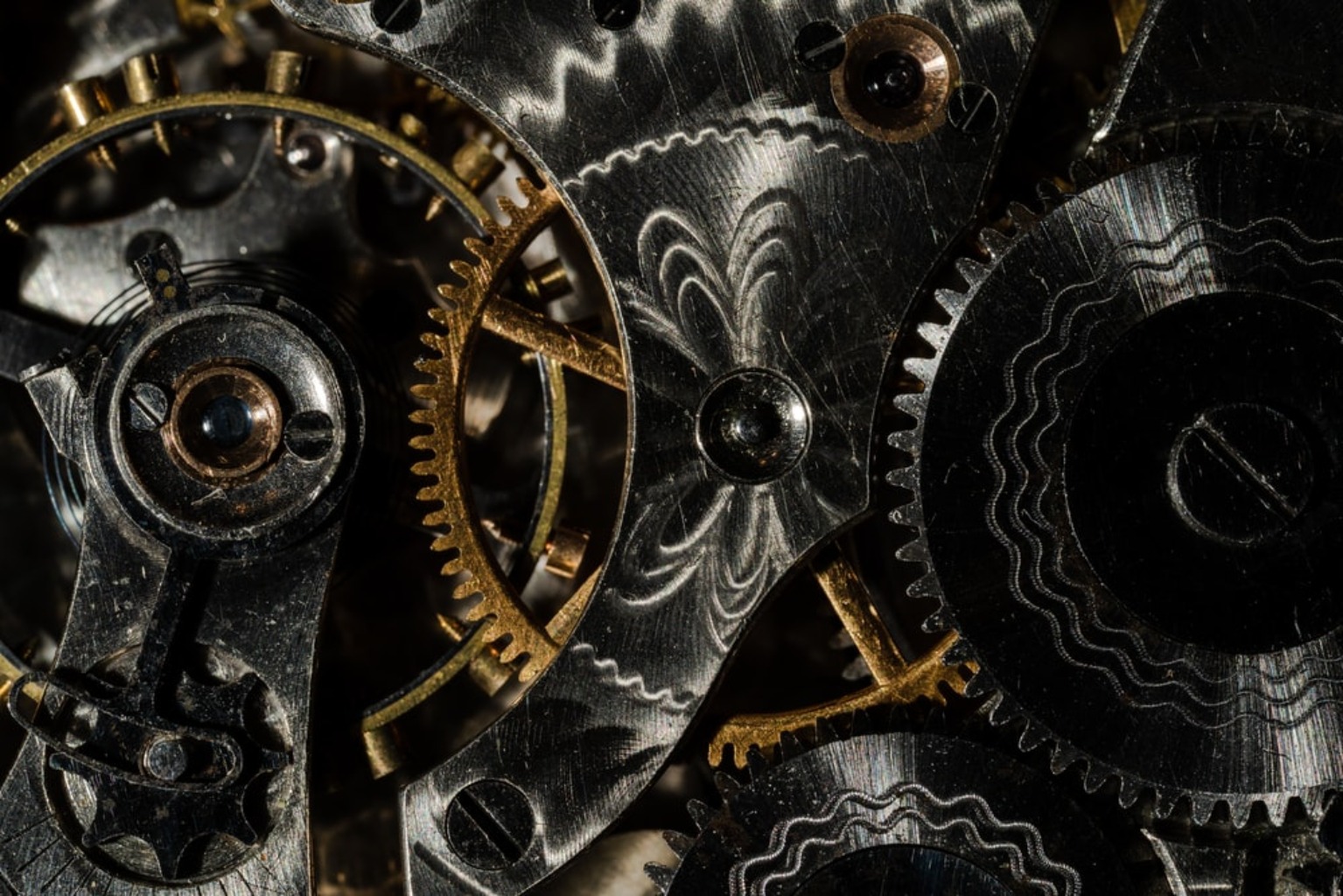
Kelsey Josephson is no stranger to the fairy tale retelling genre.
So, when Fictionate.Me hosted a fairy tale retelling contest last month, she had no trouble crafting an award-winning story.
Kelsey’s story, “A Tail of Two Worlds: A Little Mermaid Retelling”, won 2nd Place in the Grand Prize category and 3rd Place in the People’s Choice votes.
And it’s no wonder. Kelsey’s wildly popular Forgotten Beauty and the Etherbeast, a steampunk retelling of “Beauty and the Beast”, is a Top Paid and Trending hit (in multiple genres) on Fictionate.Me. It was a top ten finalist in Laterpress’ Genre Fiction Contest, it’s in the top 250 on Kindle Vella, and it has surpassed 25K reads on Radish Fiction.
Kelsey’s lyrical prose, immersive worldbuilding, and endearing characters have already made her an award-winning writer, and she’s just getting started.
Before we dive into Kelsey’s interview, let’s take a look at her winning entry. (To read her story and the other winning entries, click here).
A Tail of Two Worlds: A Little Mermaid Retelling
In this story, Kelsey has taken Hans Christian Andersen’s classic tale of a mermaid selling her soul to an evil sea witch to win the love of a human prince and turned it on its head in more ways than one.
Protagonist Lyra was once a merfolk. But her obsession with human culture made her feel she was suffocating in her underwater world, and she decided to run away with the sea witch, Nerine. Nerine, called Madam Habborlain in her new life on land, helps Lyra trade her mermaid tail for legs, and Lyra begins working for her in her apothecary. Once Lyra is on land amongst the humans, she feels she has found her happily ever after.

But when she learns her family of merfolk might be leaving their home of Covemoor, Lyra knows she must go say a final goodbye to her father. For her journey undersea once more, she must turn to the sea witch once again. But will she make a bargain she might regret?
Along the way, Lyra meets not a prince, like in the original story, but an intelligent and adventurous graduate student named Verity, who immediately changes Lyra’s life. The two women must work together to help Lyra break away from Madam Habborlain’s toxic influence.
“A Tail of Two Worlds” is an imaginative, feminist sci-fantasy retelling of “The Little Mermaid”. Kelsey sticks with her signature steampunk style in this story as well, with steam-powered factories and Verity’s submarine and 19th-century style diving suit. Lyra herself is an inventor, whose inventions became an integral part of her underwater kingdom.
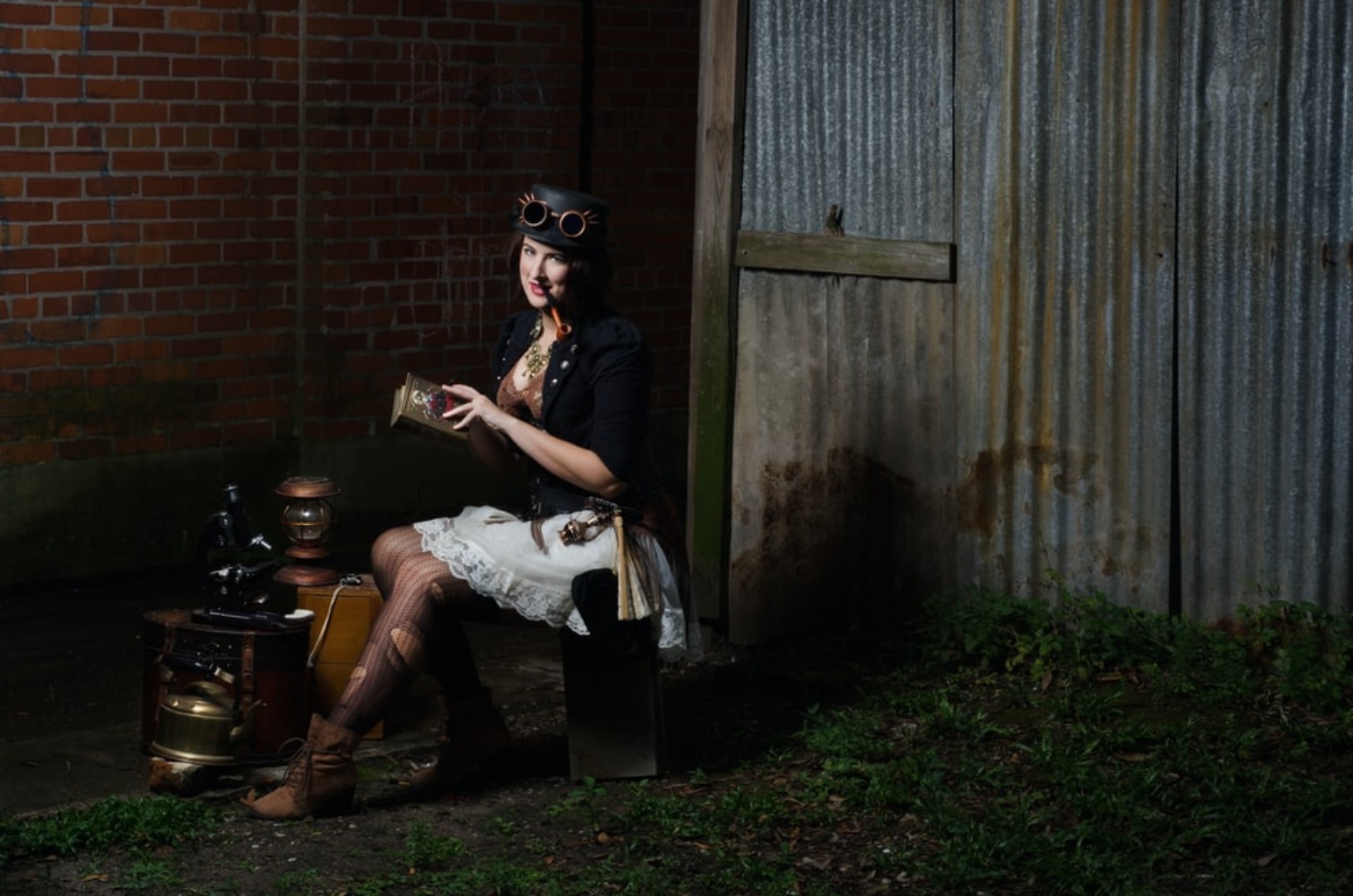
Kelsey immediately draws us into Lyra’s world, where she still seems half-torn between land and sea, desperately seeking her identity. Lyra’s emotional journey to reconcile with her father, and her sweet, budding romance with Verity make this as endearing and addictive as Etherbeast. Strong heroines, inclusive characters, and an exciting plot make this a must-read on the site, and it was immediately in the running for Grand Prize as soon as the team read it!
Author Biography
Kelsey lives with her husband, two young children, and a sometimes sabotaging, always adorable lap cat. When she’s not writing or spending time with her family, she’s reading, journaling, or paper-crafting. She has a deep love for Universal Monster movies, all things related to Nikola Tesla, and iced coffee.
Author Interview
How did you get started writing? How old were you when you started writing?
There was nothing linear or smooth on my path to writing.
I grew up writing stories and playing pretend with my sister. In middle school and high school, I participated in writing clubs, but I was almost always too shy to share my work with the group. It took me a long time to realize that just because my friends in the group were talented it didn't mean my work was bad.
Writing fell by the wayside in college, then as a young adult living in her first apartment and making ends meet, I had no energy for it.
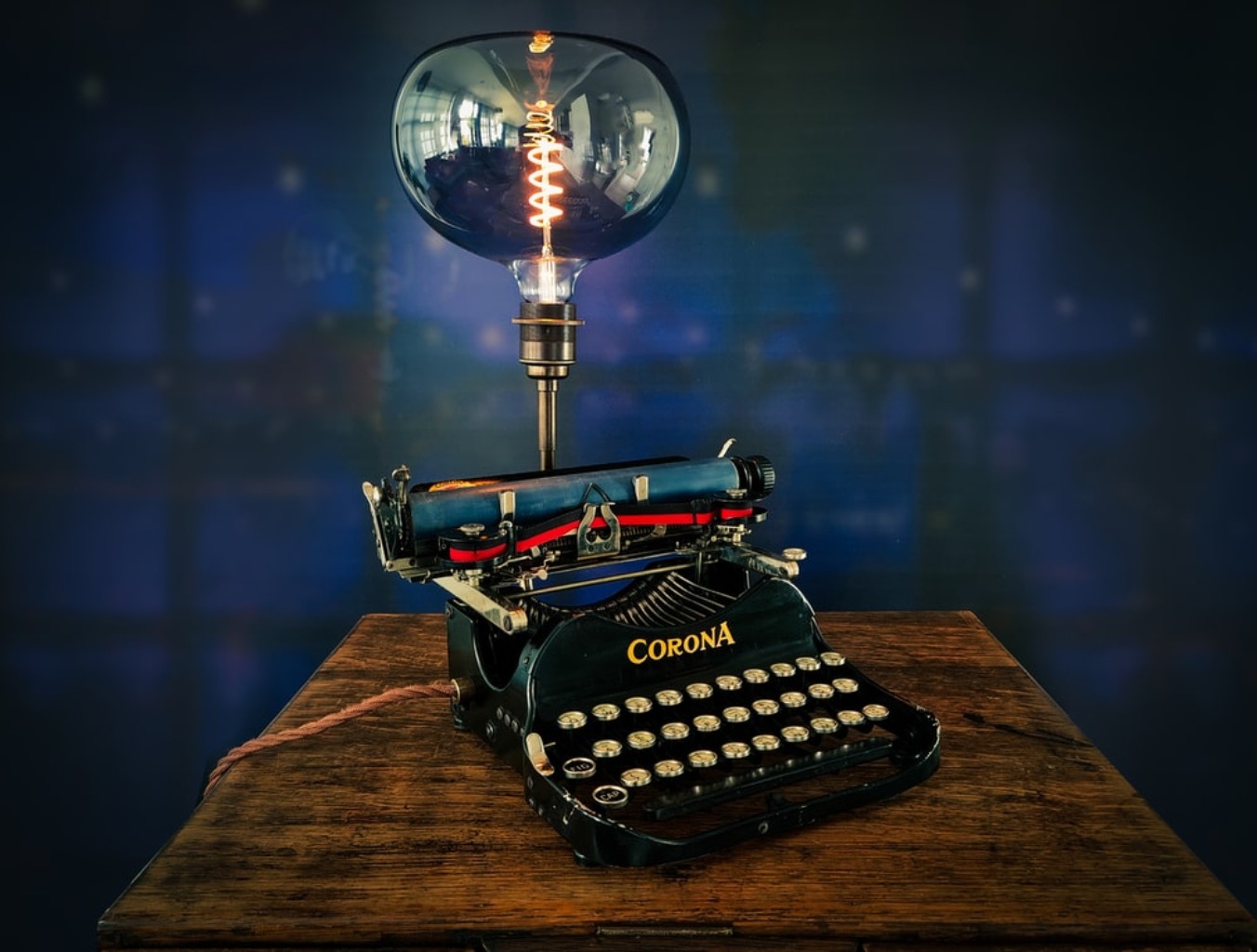
It wasn't until after my son was born and my mom bought me a copy of The Artist's Way by Julia Cameron that I began to dream about writing again.
I studied.
And I wrote.
And I studied more.
I finished things.
After about five years of this cycle, I started publishing my first series, Strange Happenings, in 2020. Schools had been shut down and I found myself solely responsible for my two children's education. Writing was (and is) my great escape. I hope my stories can provide the same feeling for my readers.
Which authors are the biggest inspirations in your work? Why?
Even though our writing styles are different, Tamora Pierce, K.A. Applegate, and Neil Gaiman are my greatest influences.
If it weren’t for Tamora Pierce, I don’t think I would have been a writer. I read her series, Song of the Lioness, in fifth grade. For the first time in fantasy, I saw a character I could relate to. Alanna begins the story as a young girl who takes control of her destiny by switching places with her twin brother so that she could become a knight.

As a character, Alanna was wonderful: messy, bold, full of contradictions (happy to don armor but she also loved beautiful clothes when she was older), made mistakes, and she’s unafraid to make her own choices (spoiler for a decades-old story: she decides to marry the King of Thieves instead of the prince). This series opened up the door to fantasy for me.
Before Song of the Lioness, I was mostly interested in gothic horror, reading Dracula the year before and The Bailey School Kids as a young reader. The latter was the first chapter book I remember reading to myself. The premise was these kids kept encountering monstrous adults in their otherwise mundane lives (their teacher was a vampire, a camp counselor was a werewolf, etc.)
Animorphs by K.A. Applegate got me interested in sci-fi with its fully realized, flawed characters that I truly cared about, especially Rachel and Tobias. The shape-shifting alien tech was amazing and well-thought-out, with dire consequences if it wasn't used correctly. I’ve never read anything quite like it, and it amazes me to this day that it was a series for young readers.
I didn’t start reading Neil Gaiman’s work until later in high school. I can’t remember if I read Good Omens or Stardust first, but I read them back-to-back. I fell in love with the way he blends genres and subverts tropes. All of his speeches and posts about creativity are inspiring. “Make Good Art” is my favorite and I watch it for a quick pick-me-up when I’m feeling down.
Your short fiction, the Strange Happening series, and popular serial Forsaken Beauty and the Etherbeast are all steeped in the steampunk genre. How did you get started writing in this genre? Why is it one of your favorites?
I’m not exactly sure which one thing got me interested in steampunk, but it started when I was a teen. I think I saw elements of it in comics and manga, maybe saw pictures of someone’s cosplay? The first steampunk book I remember reading was Boneshaker by Cherie Priest. It had zombies, alternate history, and wonderfully weird tech in it.

I also learned about Nikola Tesla my freshman year of college while studying electrical engineering, and his ideas are used as tropes a lot in steampunk fiction.
I think what draws me to steampunk fiction is three things:
1.) It’s perfectly acceptable and expected to be ridiculous with the technology and plotlines. It meshes well with other speculative fiction tropes, such as mad science and exploring the monstrous. I love blending steampunk elements with sci-fi/fantasy to get the best of both worlds: fun tech and a bit of magic in the form of alchemy.
2.) It’s a great genre for asking “What if?” questions and examining alternate history or technology lines. Frequently, I wonder what would have happened if Nikola Tesla had either better business sense or he hadn’t been ripped off. How would technology and society be different?
3.) The aesthetic. I love all the gears, brass, and leather, along with the “made in a shop” feel of the tech!

What inspired your winning story, “A Tail of Two Worlds”?
I don’t usually write out of spite, but this time I did. When I was looking for ideas for the contest, I reread a number of fairy tales, but I kept coming back to “The Little Mermaid” by Hans Christian Andersen. I had remembered from an earlier reading that the mermaid dies in the end, sacrificing herself for the prince.
What stuck with me this time is how badly the mermaid’s love interest treated her. I’m not saying anyone is owed affection or anything like that, but this boy treated her like a pet during their entire time together. He married someone else, never bothering to look into where she came from. Worst of all, the mermaid was constantly in pain, had no voice, and was only fifteen!
While I love the beautiful prose in the original and I understand the symbolism of the ending, I hated what happened to the mermaid, so I decided “The Little Mermaid” was going to be the basis for my retelling.

When I sat down to outline, I wasn’t planning on making almost the entire cast female, but I was thrilled when the story evolved into something bigger than a steampunk fix-it to the original. Suddenly, it became a story about identity and second chances. I’m very excited to be continuing the characters’ journeys later this year in ongoing work!
Besides winning 2nd place in the April 2022 contest, you also won 3rd place in the People’s Choice category. What advice do you have for authors trying to grow an audience/fanbase?
This is by far the hardest part of a writer’s career, or at least for me it is. I am still working on this. I know I’ve made it once I start getting tagged in fan art.
What worked for Forsaken Beauty and the Etherbeast has been to be consistent with the weekly posting schedule of the episodes. It didn’t really start picking up until I had 20-30 episodes out. I think it was important for new readers to see there was plenty of material to read and that future episodes would be published in a timely fashion. The promise I make to my readers is that I’ll show up for them and in return, they show up for my story.

Since “A Tail of Two Worlds” was a contest piece with votes on the line, I campaigned hard for it by posting on Instagram and sending it to my email list, too. Normally, I wouldn’t recommend posting as often as I did during the voting window, because it could burn out potential readers to see the same kinds of posts so many times, but for a contest, it’s okay. Otherwise, I suggest mixing marketing posts with other topics so it’s not always “buy my book posts.”
It helps to concentrate on only your favorite social media in the beginning when trying to grow a base. You don’t have to be everywhere, just one or two platforms. Do change up the hashtags you use to reach more people and think outside of using writing-related tags like #writingcommunity. Making friends with other writers is wonderful and one of the brightest spots of being on social media, but on your marketing posts, you want to connect more with readers.

I think for all writers wanting to grow an audience, having your own website and mailing list is key. Social media is great, too, but with the way algorithms change and accounts get hacked/locked down, having something you control and own is invaluable. So, when you can afford it, do it. The newsletter doesn’t have to be long. Just make sure to read up on the rules for it. Tammi of Newsletter Ninja is a great resource for newsletter information.
The other important bit is to keep writing, whether it's the next episode, book, or short story. Being consistent goes a long way.
Besides other authors, where else do you draw inspiration from for your stories?
K-dramas, animes, mangas, comics, art books, video games, and movies all have influenced my writing. I love how unrelated media can be sources of inspiration!
What advice do you have for new authors just getting started on their journey?
Start building your writing habit first, and make sure your loved ones know your writing time is non-negotiable. Even if you only have ten minutes a day during the week, it’s a start! I know it sounds more romantic to wait for inspiration to start writing, but it’s better to have a set time and routine. You’ll eventually get into the habit of putting words on the page if you keep showing up.

Save the editing for when the draft is done. It’s tempting to go back and rework a beginning until it shines, but the truth is, unless you’ve already finished the rest of the story, you may need to completely rework your beginning to match the ending. Even with an outline, you can still surprise yourself. Give yourself grace and time to edit later. Let the finished draft rest a bit first.
Your serial Forsaken Beauty has garnered great attention on fiction platforms like Radish, Kindle Vella, and our own site. What advice do you have for writers wanting to break into serials?
First, if you haven’t read a lot of serials, start reading a few in the genre you’d like to write in to get a feel for the style. Writing a serial isn’t the same as writing a book in that the pacing and structure are different. Episodes are generally shorter than typical novel chapters and ending on some sort of cliffhanger or revealing a new piece of information is key for keeping readers wanting to click on the next episode.

Keep your paragraphs short, because serial readers are generally on their phones and don’t want to see a wall of text. If you can keep the episodes around 1500-2500 words each, you’ll be in good shape. Even better, be consistent with a posting schedule, whether it’s weekly, twice a week, or daily.
For further studying, watch tv shows with plots that continue for the whole season (not sitcoms) and jot down notes about plot points resolved and new questions raised by the end of the episode.
If you can, write ahead of your posting schedule so that you have some cushioning. You don’t have to have the whole thing written, but having a few episodes done or at least drafted will make life easier.

Do take the time to edit your serial to the best of your ability and funds. If you’re not in a position to pay for editing yet, use the best grammar checker you can find (I’m partial to ProWritingAid), and have another person read the episode to catch typos or tell you if the episode is working. Bonus points if said person reads in your genre.
Finally, have an outline so you don’t write yourself into a corner. It’s okay to change the plan once you start, but at least you have a guideline so you’re not staring at a blank page. Having an ending in mind gives you something to write toward.
What are some of your favorite steampunk novels, serials, or stories you would recommend?
Boneshaker by Cherie Priest is a good place to start, and the rest of the series is fun, too.

If you’re into paranormal and steampunk, Gail Carriger is the queen of this genre mash-up, mixing humor and action together.
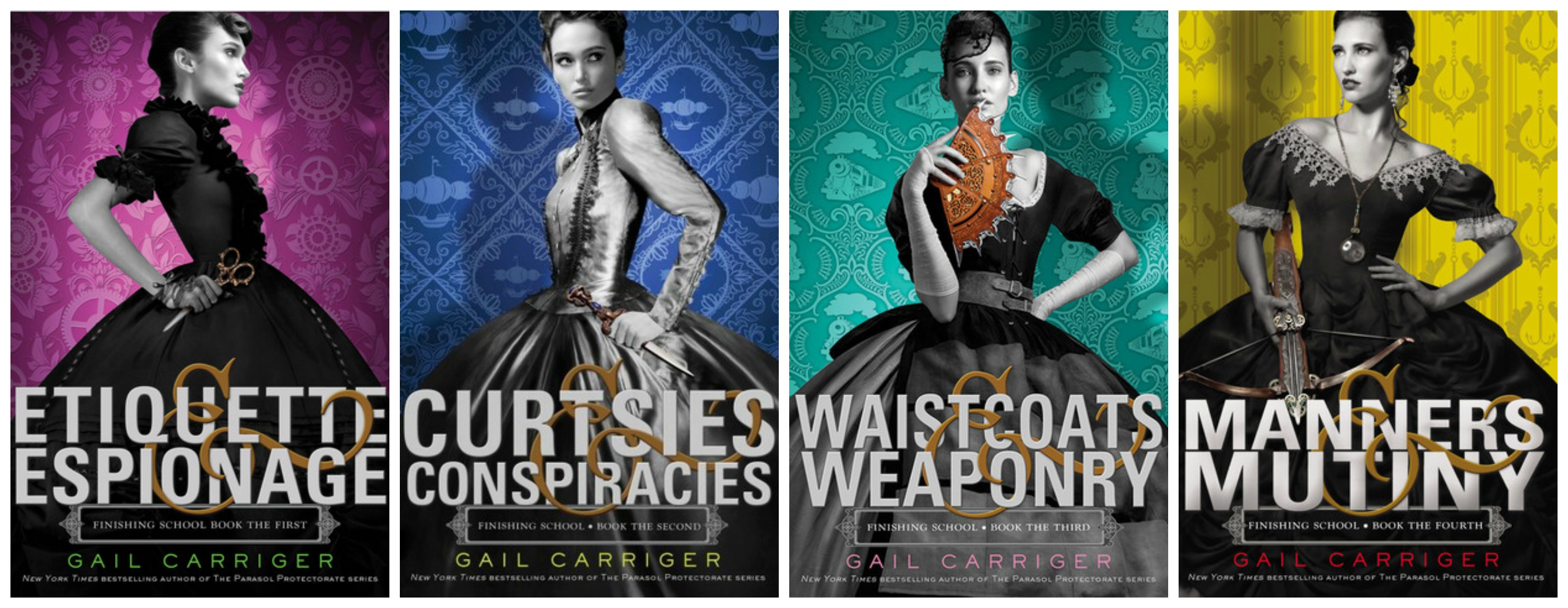
My absolute favorite steampunk book is Clockwork Lives by Kevin Anderson and the late Neil Peart. As part of the condition for her inheritance, the introverted heroine has to fill this blank book with the life stories of strangers she meets via a bit of alchemy: a single drop of their blood, willingly given. Some people’s lives only fill a few lines and others span for pages. It’s a beautiful story, and the steampunk setting is vivid.
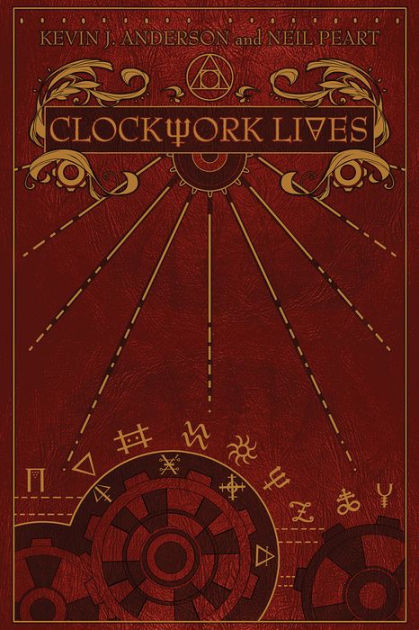
Inclusivity and representation are hallmarks of your writing, and marginalized characters are front and center in the spotlight. What is your advice to writers who want to write more inclusive characters, and how do you make them realistic and not trope traps?
Thank you! I’m still growing, but here is what I know: the universal truth about people is that they’re messy, complicated, and probably full of contradictions. Everyone wants to be seen and recognized for who they are as a whole person (even us introverts, but you don’t have to literally look at us when you do it.)
I treat my characters like people, not tokens. When I come up with a character, how they look or act sometimes just pops into my head. It’s their story arcs that I have to discover. For example, I didn’t set out to make Captain Charity of Forsaken Beauty and the Etherbeast fit into a certain mold. Now, I can’t imagine her as anything but a chaotic good, swashbuckling lesbian with a soft spot for the more reserved inventor and mayor, Maureen.
Thinking about the kinds of stories and characters I would like to read about helps, too.
One thing I recommend is to question your assumptions about characters during creation. If a trope comes to mind with a character, take the time to ask yourself why you thought of it and examine if there’s a reason you jumped so quickly to it. If it veers into trope trap territory, find a way to subvert it.

For more specific tips on writing marginalized characters, check out Writing with Color, SFWA’s blog, and Writing the Other for excellent articles on the subject.
Besides writing, what are some of your favorite hobbies?
I love art journaling and bullet journaling, especially using a lot of paper crafting elements like washi tape, stamps, and ephemera. I love playing video games, too, but haven’t had as much time lately for them. My favorites are the Mass Effect series, Dragon Age series, Pokémon, Animal Crossing, and Skyrim. I also love reading and watching shows, but sometimes, I have a hard time shutting off my writing brain and find myself studying the storytelling structure of whatever it is I’m supposed to be enjoying.
Just for fun! Name your top three favorite movies, books, and TV shows.
Movies: Phantom of the Opera (Split tie between the 1925, 1943, and 2004 versions because of their different approaches to the same characters and tropes), La Belle et la Bête (1946), and Howl’s Moving Castle (2004).
Books: Frankenstein by Mary Shelley, Gideon the Ninth by Tamsyn Muir, and Clockwork Lives by Kevin Anderson and Neil Peart.
TV Shows: The Adventures of Sherlock Holmes, Little Witch Academia, and Our Flag Means Death.
We’d like to thank Kelsey for taking the time out to interview with us, and we hope you check out her amazing work on the site.
Click here to start reading and listening now!
Stay tuned for more interviews with our winning authors, as well as updates and news about the upcoming anthology.
Follow us on Facebook | Instagram | Twitter | Discord
Check out our app on iOS and Android!